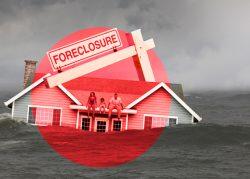Recent years saw U.S. real estate soar to new heights, which pale in comparison to the pressure swelling sea levels are predicted to pose to billions of dollars of property in the coming decades.
Rising sea levels could fully or partially flood approximately $34 billion worth of real estate on the country’s coasts, according to an analysis reported by USA Today. The estimate from New Jersey nonprofit Climate Central is projected over the life of a 30-year mortgage.
The nonprofit used tax assessment data from counties across the country, along with tidal level properties boundaries and elevation. It predicted the damage could be much worse by the end of the century, potentially tripling losses in counties adjoined to the sea.
Sea levels are forecasted to rise exponentially in the coming decades, a direct result of warming temperatures and climate change. As sea levels rise, water could move further inland and endanger more properties.
Communities along the Gulf Coast face some of the biggest risks from rising sea levels. Among the 48,000 properties that could be completely below high tide lines by 2050, a majority are in Texas, Louisiana and Florida. An estimated $108 billion of real estate could be below those lines by 2100, excluding nearly 100 counties where tax assessor data wasn’t available.
Low elevation, however, is also predicted to threaten communities outside of the Gulf Coast. New Jersey’s Hudson County paces the country in estimated value of land buildings at risk, more than $2.4 billion in all. More than 15 percent of the county’s acreage is below 2050 predicted higher water levels.
Read more


Rising sea levels may damage the bottom lines of towns and communities, particularly those reliant on property tax values. Borrowers may also struggle to get loans from mortgage lenders and insurers trying to discern risk.
Flooding isn’t the only symptom of climate change threatening home and business owners. One in five homes are also facing wildfire risk in the next 30 years, according to First Street Foundation. The nonprofit research firm said earlier this year nearly 80 million residential and commercial properties could be damaged by fire in the coming decades.
Transparency about climate risk for prospective homebuyers is growing. Last year, Redfin added ClimateCheck data to its listings, providing a ranking for fire, heat, drought and storm risks.
— Holden Walter-Warner
